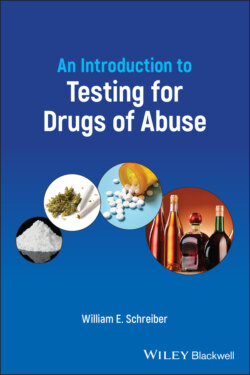Читать книгу An Introduction to Testing for Drugs of Abuse - William E. Schreiber - Страница 15
Terminology
ОглавлениеThe words drug and substance are both used in the medical community – they are generally equivalent in meaning. Substance is a broader term. It includes compounds that we may not consider to be drugs, such as alcohol, nicotine and caffeine, and it often appears in discussions of chemical dependency.
Figure 1.1 Graph comparing harm to users (x‐axis) vs harm to others (y‐axis) for 20 drugs and substances. Higher scores indicate a greater degree of harm. Drugs with the highest total scores are labeled. The points in the lower left corner of the graph represent (in order of decreasing harm to users) ketamine, benzodiazepines, mephedrone, methadone, butane, ecstasy, anabolic steroids, khat, LSD, mushrooms, and buprenorphine. The overall scores for each drug were based on assessments of 16 harm criteria.
Source: Adapted from Nutt et al. (2010) with permission from Elsevier.
Increasingly, the word abuse is being replaced with the terms misuse or simply “use.” Drug abuse carries a social stigma that may prevent people with chemical dependency issues from seeking help. The National Institute on Drug Abuse has produced a handout, called Words Matter, with tips on how to discuss addiction in objective, non‐judgmental language. It is available at the following website: https://www.drugabuse.gov/sites/default/files/nidamed_words_matter_terms.pdf
